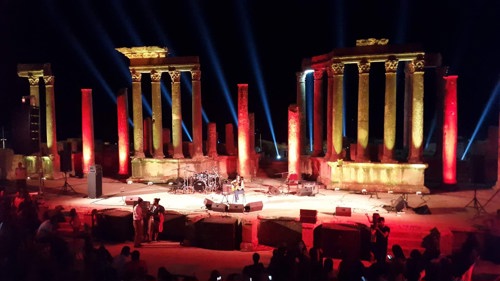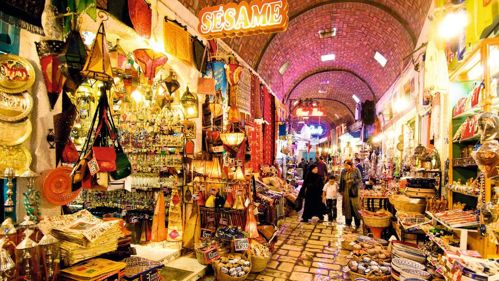10 Gems in Tunisia You May Not Find in a Guidebook
28 Oct 2019
For a country that is filled with history and culture that shaped much of the world we know today, Tunisia deserves way more than its current limelight in tourism. This north African democratic-republic includes parts of the snow-capped Atlas Mountains, the mysterious Sahara Desert, and an 810-mile coastline of white sand and blue waters of the Mediterranean Sea. Even then, Tunisia’s unique geographical layout is only the tip of the iceberg of wonders it offers to the curious traveller. Here are a few gems that Tunisia will add to your travel box of treasures in no particular order:
1. Tataouine
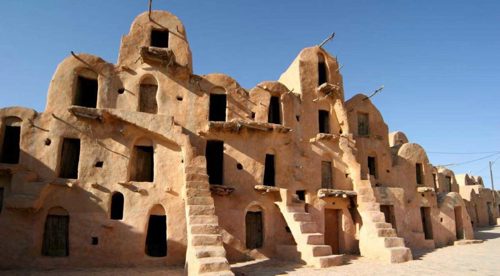
Image by villa-romana-monastir.com
If you’re wondering why this place sounds familiar, it’s because it is the same city that inspired George Lucas’ naming of Luke Skywalker’s home, Tatooine. Quite a few scenes in the Star Wars saga were filmed around different parts of Tunisia too! But first, you have to visit Ksar Ouled Soltane that’s within Tataouine itself. It is a fortified building completely made from adobe (a mud and brick material) and typically designed to have one continuous wall with carved out windows so people can watch for raiders. This place was featured in Star Wars: Episode I – The Phantom Menace and if you’re a fan, you’d already know there are special walking tours you can sign up for here.
2. The Dougga Festival
Image by wikimedia commons
Visiting Dougga will open your horizons to a way of life that existed as early as the 6th century BC. It was built during the era of the Roman conquest in this region and remnants of Numidian-Beiber, Punic, ancient Roman and Byzantine religion, culture, and architecture remain among its stone ruins till today. Since 1997, this city on a hill has been named a UNESCO World Heritage Site which has more opportunities for travellers to pay a visit to its many temples and take in panoramic views of wheat fields and the valley below. The archaeological site is best visited during the annual Dougga Festival in August, where stories of the past come to life presented in mixed media forms including classic Roman theatre, singing and dancing, light shows and historic walking tours.
3. Hammamet beach
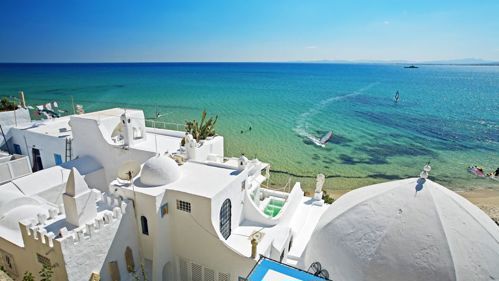
Image by topwebtravel
No holiday is complete without a trip to the beach and we’ve established the fact that Tunisia would have plenty to choose from. But which one? 41 miles from the capital city of Tunis lies Hammamet beach - an oasis of watersports for those who love swimming, surfing, water skiing, and even just going on a banana boat ride out on the deep blue water. When in Hammamet, visit Villa Sebastian, a mansion-turned cultural centre which world-renowned architect Frank Llyod Wright deemed as the most beautiful house he’s ever seen. Also found in Hammamet is the Carthageland Hammamet theme park which includes a zoo, dry and wet rides, and restaurants. Not that you can’t find a theme park anywhere else, but this will certainly give you all the sights, scents, and sounds of an amusement park with a lively middle eastern theme coursing through every activity.
4. Harissa
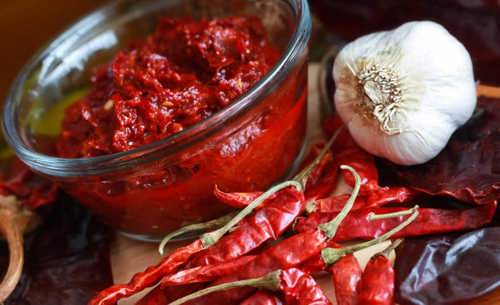
Image by daringgourmet
They say when in Tunisia, skip the tomato and go for the chilli. This would be Harrisa, Tunisia’s own hot chilli sauce made from an aromatic blend of chillies, peppers, garlic, olive oil and other spices. It is most commonly used with meat dishes, with baked eggs, roasted vegetables and just as a sauce ingredient in a burger or as a dip. It is almost a staple in Tunisian cuisine so you should be able to find it in the supermarket or traditional markets known as ‘souks’.
5. Souk shopping
Image by firstchoice
Speaking of souks, there is no shortage of quaint little markets like these scattered in every Tunisian town and here is where the art of ‘doolesha’ an old Tunisian dialect word, is practised - strolling at a slow pace for pleasure. Much to a hoarder’s delight, souks typically have shops selling handcrafted bags, kitchenware, beautifully hand-woven carpets, and all kinds of silver trinkets to buy and fill your home with or as gifts for friends and family back home. Each souk focuses on a specific craft so there is one for perfumes, spices, wool, fabric, and so on. Souks are commonly found in the city or medina, surrounding a temple or place of worship.
6. Tunisian Olives
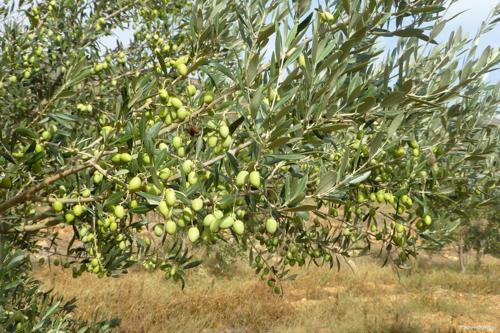
Image by middleeastmonitor
To say that you can get olives here would be an understatement. With almost 65 million olive trees grown and cultivated across Tunisia, this is truly the land of olives. Olives are best harvested by hand so as not to damage the fruit, and this still makes up a large part of rural employment across the country. Even then, there is somehow enough manpower to put Tunisia on the map for being one of the world’s top producers of olive oil. Visit the Ben Ismael family olive farm located in Toukaber and learn the process of harvesting and milling this delicious ingredient first-hand. It is about an hour’s drive from Tunis at the ancient Roman city of Thuccabor and said to be one of Tunisia’s most beautiful regions with views imitating that of Tuscany. You’ll also get to taste the freshest olive oil and bring home a bottle to add to your cooking.
7. Shakshuka and lablabi
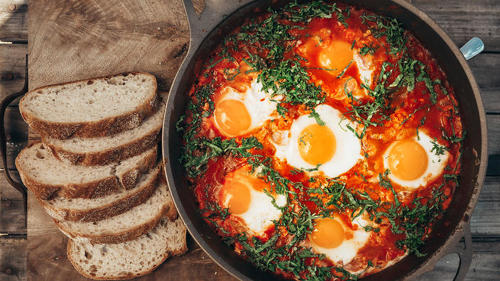
Image by sbs.com.au
Another gastronomic highlight in Tunisia is shakshuka. It’s a dish of eggs that are baked or poached in a savoury tomato-based stew with sweet peppers, garlic and other spices, living up to the meaning of its name, “all mixed up”. This fragrant dish is eaten at all times of the day: served with bread for breakfast, eaten with rice for lunch, or just as a mid-day snack. One of the best shakshuka dishes in Tunis is found at Chou Chou cafe. Served with mergez sausages, harissa, and a side of three baguettes, you’ll be able to eat for two meals at once! Another uniquely Tunisian dish is lablabi and eating it as a foreigner for the first time can be quite an interesting experience. Restaurants that serve this winter dish will bring a basket of bread and an empty bowl even before taking your order. You are to break away pieces of the bread (preferably the crust) into the empty bowl which they will fill with hearty chickpea soup. Now that’s comfort food alright!
8. Hammams
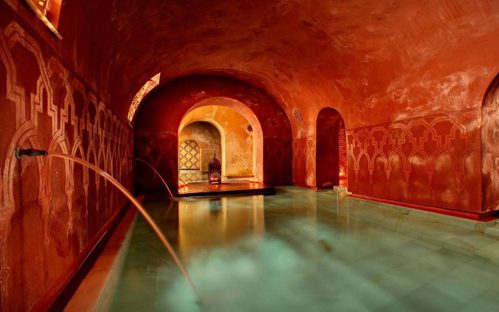
Image by awoljunkie
After all that indulging and market-strolling, head to a hammam, which is a traditional Tunisian spa or public bath. This tradition of having a public bath first started with the Romans as having a personal bathroom with individual water systems was unheard of at the time. When the Ottoman Empire took over, they named it “hammam” which literally just means ‘public bath’ in Turkish. Hammams are separated for men and women and thankfully are not as liberal as other traditional spas in certain countries. You will be given bath clothes to change into and led to soak in a hot bath in a room full of steam which naturally softens your skin. Once that’s done, you’ll receive a good scrub down with a rough washcloth which removes all your dead skin cells. Today, locals usually visit hammams simply to get clean before entering a mosque for prayer. So many traditional hammams may not be as fancy as you’d expect it to be. That being said, Palais Bayram in the heart of Tunis is a great place to get the best of a Tunisian hammam. It’s a traditional Tunisian mansion which was converted into a boutique hotel known for wellness. Step back in time and feel like royalty within its private hammam and 18th century style interior. While you’re enjoying a rejuvenating body treatment there, you can thank history for yet another pleasant contribution to your travel experiences.
9. El Ghriba Synagogue

Image by mosaicnorthafrica
When it comes to faith and religion, most countries in northern Africa identify as Muslim. However, because of its history, the cultural landscape in Tunisia still has traces of different religious beliefs, including Judaism. On Djerba island stands El Ghriba Synagogue, said to be the oldest place of worship in Tunisia dating back to 586 BC. The interior of the building is stunningly beautiful yet whimsical with patterned tiles creating pleasant tones, fit for a place meant for peace and reflection. It is a significant structure as many Jews around Europe would make a pilgrimage to Tunisia just to pray in this synagogue.
10. Al Zaytuna Mosque and The Great Mosque of Kairouan
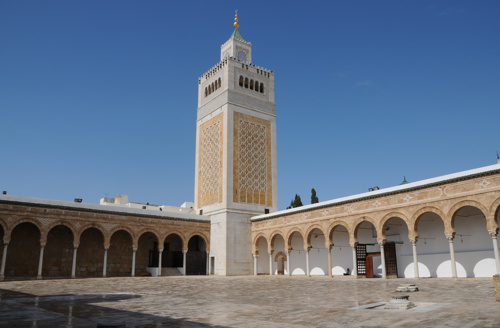
Image By Citizen59
Finally we end this list with two great landmarks of Islam in Tunisia, the Al Zaytuna Mosque and the Great Mosque of Kairouan. The latter usually gets more tourists, especially since it is situated within the UNESCO World Heritage town of Kairouan. A unique feature of this mosque is its Corinthian pillars, which mark the influence of Roman architecture during its enactment. That being said, Al Zaytuna is not to be missed either. It is an architectural beauty with unique features such as its highly ornate entrance dome of ochre and red brick. Al Zaytuna was more than a place of worship. It was also a place of defense as it faced the sea and a university which saw many Muslim scholar graduates through its doors.
Check out www.mayflower.com.my for some of the best flight and hotel deals and more! Follow Mayflower Facebook Page for the latest travel deals.
------------------
Sarah Lim
